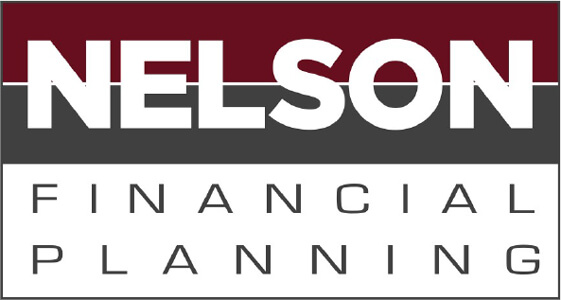The government makes changes to retirement plans every year. In 2022, we’re seeing a big push toward annuities within 401K platforms. There’s also a new type of retirement plan called a Pooled Employer Plan (PEP), which makes it more feasible for employees of small businesses to contribute to a 401K. The third big change is a push toward Environmental Social Governance (ESG) funds.
What Are ESG Funds?
ESG funds are equities and/or bonds affected by environmental, social, and governance factors. This means the investments in the fund have passed stringent tests regarding how sustainable the company is in terms of its ESG criteria.
At Nelson Financial Planning, we’re not particularly big fans of ESG funds because introducing external subjective factors into the investment mix doesn’t necessarily yield a better return. And after all, the most important thing about your investments is that they provide a healthy return.
What Should You Be Asking Yourself Before You Retire?
Here are three questions to ask if you’re getting close to retirement.
At What Age Should I Retire?
Five specific ages come up in this conversation:
- ½ years old is the age you can start drawing from your retirement account and not face an early distribution penalty.
- 62 years old is the age you can start collecting Social Security retirement benefits.
- 65 years old is when you become eligible for Medicare.
- 67 years old is considered the full retirement age under Social Security, meaning you can collect the full benefit without any reduction.
- 70 years old is when you become eligible for the maximum Social Security benefit.
Will I Have Enough Money to Last My Whole Retirement?
Many people are focused on this question, what with the market volatility we’ve seen this year. Here’s a simple way to determine whether you’ll have enough money in retirement:
- Multiply your retirement savings by 0.04. This is the annual income you can expect from your investments going forward.
- You can also divide your retirement savings by 25 to get the same result.
- Don’t forget to account for Social Security, pensions, and other sources of retirement income besides your 401K.
What Are Some Smart Decisions I Can Make with My Money in Retirement?
First, understand the debt side of the equation. Far too often, people enter retirement with a $500,000 mortgage. If you do this, be sure to account for the debt when considering your cash flow and living expenses. It’s much more ideal to eliminate debt before retirement so you don’t have to worry about extra payments chipping away at your fixed retirement income.
Second, consider your investment allocation. The goal is to have different funds performing differently at different times, so we recommend investing 15 to 25 percent of your portfolio in conservative options, such as balanced funds, bonds, and cash. This way, if the market doesn’t behave—like we’ve seen so far in 2022—you know that some of your retirement funds aren’t as subject to the volatility of the overall market. This means you can draw from the conservative portion of your portfolio and wait for the rest to recover as the market does.
Third, think about what investment accounts you should be pulling from and when based on their before tax/after tax status. Much of your decision comes down to tax efficiency. However, this concept has become much broader since Congress eliminated the stretch IRA in 2019, accelerating the taxation of your assets to the next generation. As a result, you must not only consider the tax implications for yourself but for your children and grandchildren. This might result in taking more money from certain retirement accounts than you would have just a few years ago.
Do You Understand Your Investment Costs?
This is a topic we cover a lot here at Nelson Financial Planning because it keeps resurfacing. The financial services industry uses confusing terms like commissions, fees, fee-only, and fee-based. But all of this boils down to one word—cost. No matter what you call it, an expense of any kind will always drag down your investment result.
Think of the past 10 years when we had incredibly low interest rates and incredibly low inflation. Investment results measured by the broad-based markets were well into the double digits on a trailing 10-year basis! When making that kind of money, you might not pay as much attention to the underlying costs of having an investment portfolio. However, in today’s low-interest, high-inflationary environment, you get muted returns and lower dollar values, making the underlying costs incredibly important.
Consider that when the return is 12 or 13 percent, an underlying cost of 1.5 or 2 percent creates about a 15 percent drag on your overall investment return. When the return is only 7 percent, that same 1.5 or 2 percent cost is almost a 30 percent drag, which is quite high.
Far too often, people only focus on one piece of their investment costs. Or, worse, they’re only told about one piece of those costs. That’s why it’s important to know that two costs always apply when using financial services:
- The expense of the investment itself
- The management fee
Choosing the cheapest possible investment may not always be best if you then get charged a higher management fee. In short, if you’re paying more than 1 percent for financial services with no mechanism to reduce that over time, we encourage you to shop around for a new financial planner.
At Nelson Financial Planning, we can help you change your life with a successful financial plan that provides peace of mind for the future. We are transparent about our fees and help you maximize your retirement account using today’s best investment strategies. To learn more, please contact us online or call our Winter Park, FL, office at 407-307-3061.
- 8 Wonders1
- Bank Investments3
- Beating Inflation1
- Budget for Retirement3
- Corporate Transparency Act2
- Digital Currency1
- Energy Tax Credits1
- ESG Funds1
- Featured Blog0
- Financial Planning10
- Financial Success3
- Importance of Dividends2
- Investment Portfolio5
- Investment Strategy2
- IRA1
- Joel Garris1
- Nelson Financial Planning5
- Net Worth Improvement1
- Next Gen Dollars and Sense1
- Pension Plans1
- Retirement “Secure” Act2
- Retirement Planning2
- Retirement Regrets4
- Social Security3
- Tax Liability3
- Tax Planning6
- Year-End Tax Changes3






